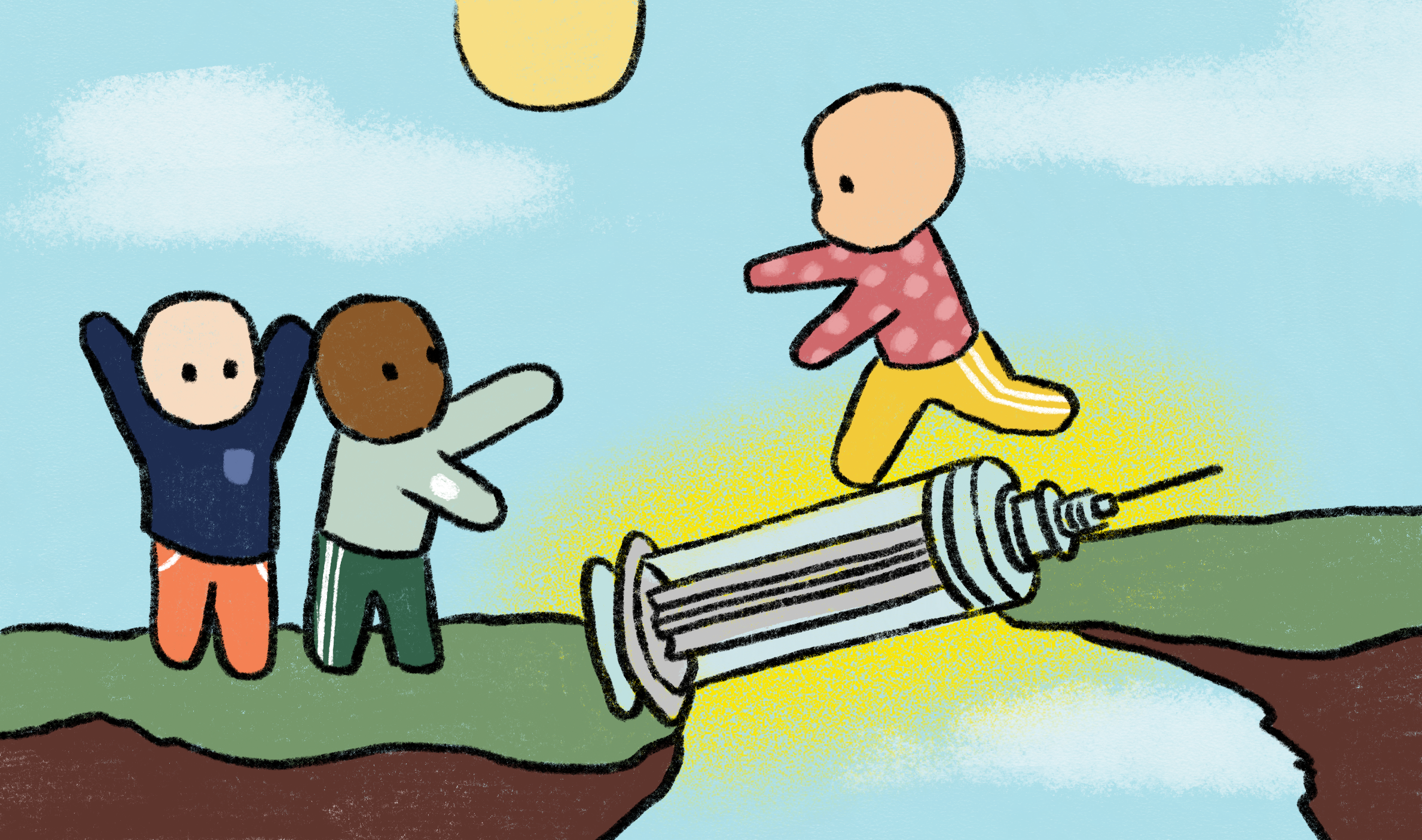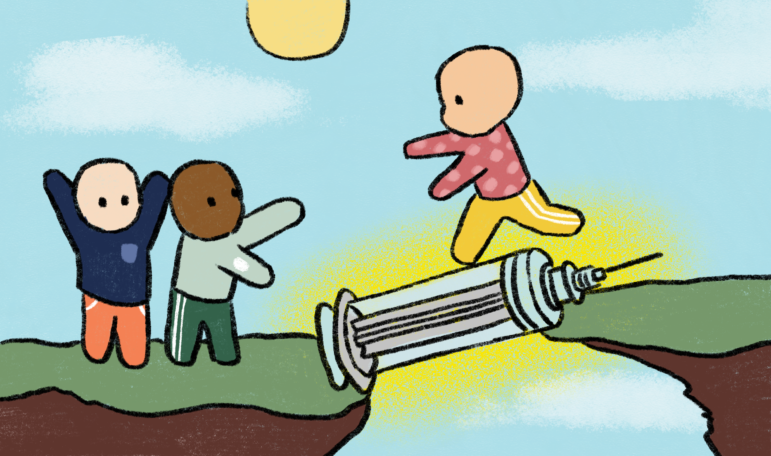

On May 10, the Food and Drug Administration approved the Pfizer-BioNTech COVID-19 vaccine for 12 to 15-year-olds as clinical trials reported it had / the vaccine had 100% efficacy for this age group. Two other companies, Moderna and Johnson & Johnson, are conducting their own clinical trials and plan on making vaccines available for adolescents as early as the fall of 2021. Until then, the experiences of many Aragon students over 16, who were vaccinated mainly because they are essential workers, offer a glimpse of what will come.
Senior Taylor Rokala works at Sibby’s Cupcakery in San Mateo and was eligible for a COVID-19 vaccine at the end of February thanks to her food service worker status. Her employer encouraged her to receive the shot, and after several visits to the registration website, Rokala secured an appointment for Pfizer’s vaccine at a Walgreens in San Francisco. She brought pay stubs as proof of her employment, but found them unnecessary.
“It was pretty easy,” Rokala said. “I just showed [the Walgreens employees] my confirmation and my ID, and they were like, ‘Okay, fill this form [out].’ Then they gave me the shot within 10 minutes. … It wasn’t super strict.”
Rokala waited in her car for 15 minutes to monitor for severe reactions. Although she didn’t experience any symptoms after her vaccination, flulike side effects such as fatigue or fever are common. Of the participants in v-safe, a system created by the Centers for Disease Control and Prevention to monitor vaccine side effects, 69.4% reported reactions outside of the injection site after their second dose. Younger people appear to experience these side effects more.
“I had soreness for the first day [after the first dose], … just for a little bit,” said junior Darshan Gupta, who received Pfizer’s vaccine at the Moscone Center in San Francisco. Then, [after] the second vaccine … I felt like I had the flu, but it only lasted for one day, so I was good.”
Before going to the Moscone Center, Gupta and his mother spent a few days checking if CVS Pharmacy had surplus vaccines, but didn’t have any luck. Others were more fortunate in their search. Senior Malia Pollock’s parents were eligible for a COVID-19 vaccine in late February, and received their first dose of the Pfizer vaccine at the Golden Gate Regional Center. Their appointment was late in the day, and when they arrived they were told that the site had extra doses.
“There were, I think, 27 no shows, and so [the vaccination site] had 27 extra vaccines that they would have had to throw away,” Pollock said. “[My parents] brought my sister and I back, and [the people at the vaccination site] let us get vaccinated with the [vaccines] that they were going to toss out.”
Vaccinating students is important to stopping COVID-19’s spread; while teens rarely die from COVID-19, they transmit the virus as much as adults do. According to Sara Devaney, the San Mateo Union High School District health coordinator, vaccinations are crucial if SMUHSD plans for all students to return to campus in fall. Vaccinated students will be exempt from certain requirements per the CDC’s guidelines. For example, a vaccinated student who is in contact with a COVID-19 case but is asymptomatic would not have to quarantine, while an unvaccinated student would.
“Get the vaccine, that’s my advice,” said SMUHSD Superintendent Dr. Kevin Skelly. “That’s what the president suggests, that’s what the scientists say, [and] that’s how we beat [COVID-19]. … Get ready [to] get the vaccine [because] it’s a no-brainer.”
Several barriers can complicate receiving a vaccine — early in distribution appointments were scarce, and few sites serve minors (only Pfizer’s vaccine is approved for 16 and 17-year-olds). The SMUHSD has begun collaborating with the City of San Mateo and San Mateo County to use its schools as vaccination sites. It hosted its first vaccine clinic on May 1 at San Mateo High School. The clinic encourages appointments but also welcomes walk-ins, unlike many other vaccination sites.
“There are a whole bunch of students whose parents have neither the time nor the … ability to get [their kids] vaccinated, and we’ve got to get them vaccinated,” Skelly said. “I think schools are really well positioned to make a big push on this vaccination front. … The sooner we get people vaccinated, the better.”
In the coming months, many more students will receive a COVID-19 vaccine. Though the mechanics of vaccinating students are changing, the purpose — to end the pandemic and resume normal life — will not.



